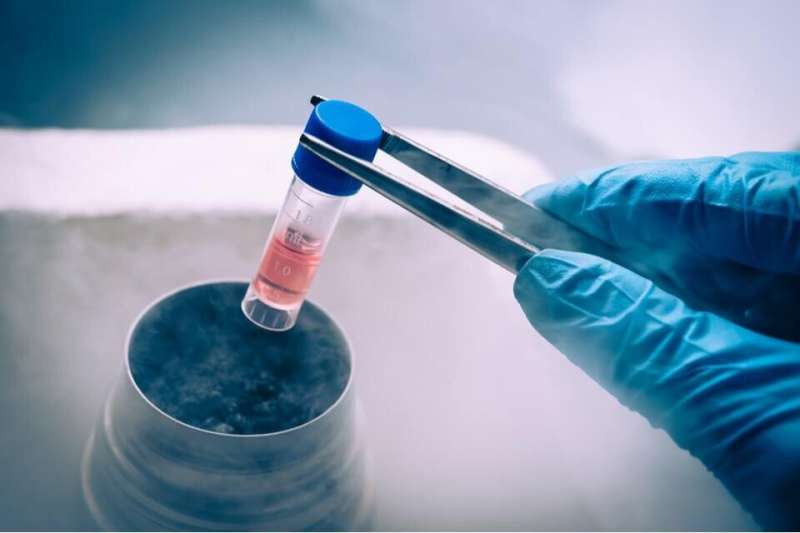Credit: Keele University
Researchers from the Neural Tissue Engineering group at Keele University (NTEK) have reported promising findings in two new studies looking at methods to improve transplantation of stem cells for injury repair in the brain or spinal cord.
The team, made up of experts from the Schools of Life Sciences and Medicine at Keele University, have recently published two new papers about their research into stem cell delivery mechanisms, which could ultimately be used to help people with serious injuries such as spinal cord damage.
The studies have been published in the Journal of Controlled Release and in Materials Science and Engineering, and seek to solve a long-recognized problem with using stem cells for injury repair.
The challenges of using a stem cell therapy in the brain or spinal cord are to ensure the cells can be delivered to the injury site in good condition, so that they can carry out their repair function, and to make sure the cells are evenly distributed to maximize recovery. Injecting stem cells through a needle can therefore be problematic as squeezing the cells through the needle can damage them and affect their distribution and ability to grow into new tissue.
As a result, the Keele researchers have been investigating an alternative delivery system, where porous implants are laden with stem cells for transplantation. They examined whether materials that are currently used in a clinical setting can be repurposed to transplant stem cells to an injury site intact and evenly distributed, to maximize the chances of repairing the injured tissue.
This has the added benefit of reducing the time it would take to get these materials into the hands of surgeons as they are already approved for clinical use, whereas a new product would take an average of seven years to be approved.
The first of these studies was led by Professor Divya Chari in collaboration with neurosurgeons at the Royal Stoke University Hospital. The study tested a medical product called Duragen Plus which is already used by neurosurgeons to seal the brain coverings after surgery, to see if it could be used to deliver brain stem cells to an injury site.
The experimental work, led by Louise Finch, a former Keele medical student and aspiring surgical trainee, showed that Duragen Plus was an effective and safe medium for potentially transplanting stem cells to an injury site without impacting on the stem cells' regenerative capabilities, as they were still able to give birth to the different types of neural cells required for repair.
A further study led by Dr. Christopher Adams and Ph.D. student Aina Mogas Barcons, yielded equally positive results. Their findings, published in Materials Science and Engineering, were obtained through a similar experiment using a product called Hemopatch, which is typically used in a clinical setting to stop bleeding and promote growth of new tissue.
Once again, the results showed that this was a promising material for delivering stem cells, and as with the Duragen Plus experiment, Hemopatch supported the cells without affecting their repair capabilities.
Both of these studies suggest that using materials such as these, surgeons can improve the survival, function, and distribution of stem cells in a clinical setting, with a view to helping the hundreds of thousands of people that are affected by brain and spinal cord injuries every year.
Professor Divya Chari said: "This is a new area for us, and we hope to be able to take this work forward in collaboration with our neurosurgery partners to the preclinical testing of a range of medically approved materials."
Dr. Christopher Adams added: "I believe using polymer scaffolds will become the method of choice for stem cell delivery to the nervous system as there are numerous advantages to this approach. Proving that existing medical materials can be used for such a purpose could benefit stem cell transplantation researchers by providing them a clinically safe material for implantation."
Aina Mogas Barcons added: "Being a part of Neural Tissue Engineering Keele (NTEK) has allowed me to conduct high quality research and to work in a multidisciplinary team including neuroscientists, tissue engineers and clinicians. It has been great training for my future aspirations as a medical researcher working in the area of neurological injuries."
Journal information: Journal of Controlled Release
Provided by Keele University























